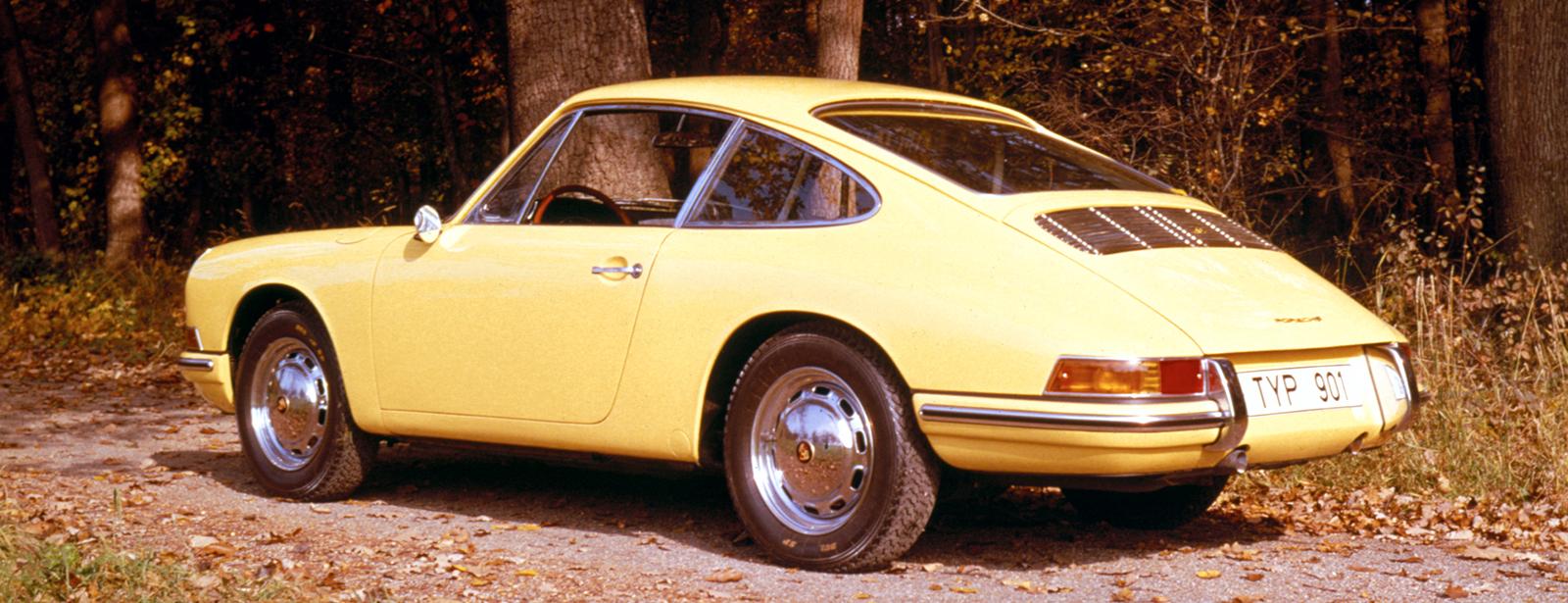1964 Porsche 901

The descriptions of the Classic Cars in the Directory were partly generated or supplemented with the help of artificial intelligence (AI). The content may occasionally not always be entirely accurate or factually correct despite careful checking.
The Porsche 901 1964 is a legendary sports car that has caught the attention of car enthusiasts and collectors all over the world. This vehicle is a true masterpiece in terms of design, performance, and engineering, making it a cornerstone of automotive history. Here, we'll take a closer look at the technical details that make this car so special.
The engine of the Porsche 901 1964 was a 2.0-liter air-cooled flat-six that produced 130 horsepower at 6,100 rpm. This engine featured aluminum-alloy construction, forged crankshaft, and camshaft as well as sodium-filled exhaust valves that were held in place by a double spring. With a fuel injection system, this engine was able to produce enough power to propel the car up to a top speed of 131 mph.
The transmission of the Porsche 901 1964 was a 5-speed transaxle that featured a limited-slip differential. The gear ratios were perfectly set to ensure a smooth ride, while the limited-slip differential helped to maximize the car's handling performance. The transmission also had a hydraulic clutch, which provided an exceptionally light pedal feel.
The suspension of the Porsche 901 1964 was independent, featuring torsion bars at the front and rear. At the front, the car featured MacPherson struts and at the rear, semi-trailing arm suspension. These were lightweight and sturdy, providing incredible handling and responsiveness, which made this car easy to handle even at high speeds.
The brakes of the Porsche 901 1964 were also top-notch. It was equipped with four-wheel disc brakes that provided excellent stopping power. This meant that the car could stop on a dime, even at high speeds, which only added to its excellent handling.
The wheels of the Porsche 901 1964 were lightweight and sturdy, featuring five-lug hubs, ventilated brake rotors, and all-around independent suspension. The tires used were specially designed for this car; they were wider and had a lower profile for increased grip and handling.
In terms of body and design, the Porsche 901 1964 also stands out. The car had a sleek, aerodynamic body that was timeless, which featured a distinctive front hood that sloped down to a pointed grill. The body was lightweight, featuring aluminum doors, engine cover, and rear deck lid. Overall, the Porsche 901 1964 was a marvel of design and engineering, representing the best that Porsche had to offer.
In conclusion, the Porsche 901 1964 is an automotive marvel that still continues to capture our imaginations even after all these years. However, the secret to its enduring appeal lies not just in its looks but also in its technical finesse. From the engine to the suspension and the brakes, everything was designed with a sense of purpose and attention to detail, making this car truly one-of-a-kind.
Milestones
- 1963: Development and production of the Porsche 901 prototype began - 1964: Introduction of the Porsche 901 at the Geneva Motor Show - 1964: Peugeot legally contested the use of the '901' designation, forcing Porsche to change the name to '911' - 1964: Start of mass production of the Porsche 911 - 1964: First deliveries of the Porsche 911 to customers - 1964: Launch of the Porsche 911S, a sportier version with a more powerful engine - 1964: Porsche introduced the Targa model with a removable roof panel and roll bar - 1964: Introduction of the Porsche 911 Carrera, featuring a more powerful engine and improved suspension - 1964: The Porsche 911 won its first major race, the Coupe des Alpes - 1964: Porsche expanded its motorsport presence with the creation of a dedicated racing department, Porsche Motorsport.Technical
- Engine: 2.0L 6-cylinder boxer engine - Power: 130 horsepower - Top speed: 130 mph - Acceleration: 0-60 mph in 8.0 seconds - Transmission: 5-speed manual gearbox - Brakes: Disc brakes on all four wheels - Suspension: Independent suspension with torsion bars - Wheels: 15-inch steel wheels with Porsche hubcaps - Interior: Leather bucket seats, wood-trimmed steering wheel, and dash - Body: Two-door coupe with chrome-lined windows and Porsche emblem on hood - Weight: 2,200 lbs.



